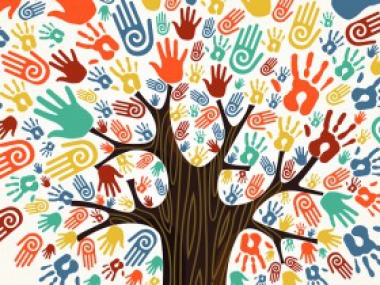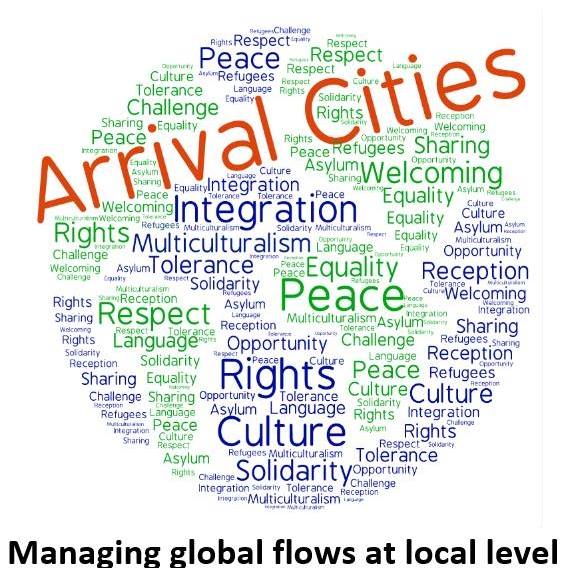A short discussion note on Community Cohesion
Edited on
02 October 2018The theme of the First Workshop in Dresden 21-23 September 2016
The issue of community cohesion has becoming increasing more pressing and as such has pushed the issue higher up the political agenda following the tragic events in Paris and Brussels. The ongoing state of emergency in Paris and Brussels, the ongoing arrival of migrants fleeing war and poverty and the recent attacks in Nice, Normandy and in several German cities have brought to the fore the ongoing challenges facing cities in respect of managing the new flows as well as addressing the issue of community cohesion.

The issue has also moved higher up the political agenda with the growth of far right parties across many EU member states.
Cities are places of diversity. The coexistence of diverse lifestyles is recognized as a feature of urban societies that are becoming more diverse in terms of culture, nationality, religion, gender and age, to name a few. Local authorities face the challenge of how to manage this diversity and find the intersection between various areas, and not only in relation to the growing migrant population.
DEFINITION(S)
There are many definitions and this note is not going to dwell on this aspect. What is clear that is most definitions share some common elements and this is reflected in the definition used by the UK Local Government Association (LGA) (this is an association of hundreds of local authorities within the UK). The LGA definition states that:
“A cohesive community is one where:
- There is common vision and a sense of belonging for all communities;
- The diversity of people’s different backgrounds and circumstances are appreciated and positively valued;
- Those from different backgrounds have similar life opportunities; and
- Strong and positive relationships are being developed between people from different backgrounds in the workplace, in schools and within neighbourhoods.”
Source: Local Government Association et al (LGA, 2002)
Given the above definition, then it’s very clear that from the outset that, community cohesion programmes have been developed on a wider basis than one-to-one contact or cross-cultural interaction. The above definition also recognizes the need to ‘positively value’ the ‘diversity of people’s different backgrounds’ and to ‘promote a common vision and sense of belonging for all communities’. In other words, individual contact and interactions needed to be supported by wider social and political commitments – and actions.
The LGA definition was further developed by the Commission for Integration and Cohesion (CIC) which was set up by the UK government following the London bombings. The CIC definition included the “responsibilities” as well as “rights” and brought in the key issue of trust.
The CIC definition states:
“A cohesive community is one where:
· a defined and widely shared sense of the contribution of different individuals and groups to a future local or national vision
· a strong sense of an individual’s local rights and responsibilities
· a strong sense that people with different backgrounds should experience similar life opportunities and access to services and treatment
· a strong sense of trust in institutions locally, and trust that they will act fairly when arbitrating between different interests and be subject to public scrutiny
· a strong recognition of the contribution of the newly arrived, and of those who have deep attachments to a particular place – focusing on what people have in common
· Positive relationships between people from different backgrounds in the workplace, schools and other institutions.”
Source: Commission for Integration and Cohesion (CIC, 2007)
Types of actions to support Community Cohesion
Actions to support community cohesion generally aim to build understanding between different groups and to build mutual trust and respect by breaking down stereotypes and misconceptions about the ‘other’.
Actions to support community cohesion generally seek to develop a positive vision for diverse societies, in which people from all backgrounds would feel that they belonged and were valued, enjoyed similar life opportunities and interacted with people from different backgrounds to break down myths and stereotypes and to build trust.
As such Community Cohesion measures are generally promoting an intercultural (as opposed to a multi –cultural) perspective.
The critique of multi-cultural approaches, is that they did little or nothing to break down the barriers between the communities, to promote interaction and mutual trust and understanding – prejudices were allowed to fester with little leadership at either local or national level to promote a positive view of diversity. In these circumstances, it was relatively easy for the far right and other extremists to develop myths and misinformation and stir up race and religious hatred – and to maintain the conditions under which disadvantage and inequalities would persist.
Here are some examples of actions that can be seen in relation to building community cohesion.
· Measures to countering of myths and misinformation about minorities
· Measures to ‘understand the stranger’
· Measures to use ‘the power of sport’ to bring communities together
· Measures to develop new communications strategies to promote inclusion and a sense of belonging
· Measures to more effectively map and engage with diversity in local areas
· Measures to anticipate tensions and conflicts within and between communities
· Measures to develop professional skills to understand and respond to cohesion issues
· Measures to prevent radicalization of young people
· Measures to improve the relations with, and integration of, new European Migrant
· Measures to scrutinize performance.
Some resources
- Community Cohesion – an action guide, LGA, 2004
- What works in community cohesion, research study for the Commission on Integration and Cohesion, DCLG, June 2007
- Council of Europe’s ‘Living Together’ report which presented 17 ‘guiding principles’ for Europe’s response to the growing threats of intolerance and discrimination. The report also signaled increasing disillusionment with the concept of ‘multiculturalism’ as it had become understood and declined to use the term.
- The European Commission’s website on integration is a useful resource http://ec.europa.eu/ewsi/en/
Haroon Saad
Lead Expert
 Submitted by cvestrini on
Submitted by cvestrini on
